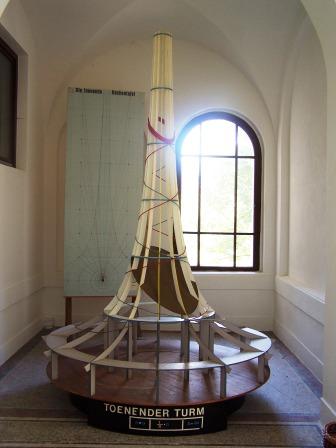John W. Keely held similar view as Tesla and Russell
Peter Davey:
Nikola Tesla:
John W. Keely
"the two vibrating aggregates " are your trees existing under the Schumann Resonance
and also :
John Ernst Worrell Keely : Sympathetic Vibratory Physics
Peter Davey -- Sonic Resonance Boiler
YouTube - ‪Vibration. See the unseen.‬‏

The Theory of a Musical Universe (wave matter)[ 1] "The universe consists solely of waves of motion." relates Walter Russell in chapter 31 of A New Concept of the Universe. Another way of saying this is: "There exists nothing other than vibration." In Russell's statement lies the base for his next blast at orthodoxy's belief in a material universe: "Any theory which cannot find a fitting place within the wave has no other place for it in Nature." Hard words for sure but can they stand up to scrutiny? Is it possible to create a paradigm of nature that is structured entirely on wave or vibration theory?
Investigating the pioneer work of John W. Keely's "Sympathetic Vibratory Physics" [2] would lead us to believe this is so. Logically speaking, for such a paradigm to exist it would be couched entirely in vibration terms and concepts and would evolve from the simple to the complex addressing atomic phenomena all the way through human activity. The author (Dale Pond; Frank Germano, ED) believes this can be done, albeit not exhaustively, in so short a paper as this one. In as much as a premise voiced ought to be demonstrated it will herein be shown how all vibration is intimately connected to all other vibration...
...The vibrations of windows and glass dishes in response to the sounding of various musical chords first set his mind upon the subject of vibration, and the curious sympathy between distant waves vibrating in harmony.
...Therefore music is organized vibration or sound set in orderly principles of structure and behavior. The principles that make sound into harmonious music are the same principles that govern all associating vibrations throughout the universe - and that includes everything that there is. It will be shown how any given vibration gives rise to a complex yet simple series of subordinate vibrations known generally as harmonics and these harmonics are relative to one another as are musical intervals.
Investigating the pioneer work of John W. Keely's "Sympathetic Vibratory Physics" [2] would lead us to believe this is so. Logically speaking, for such a paradigm to exist it would be couched entirely in vibration terms and concepts and would evolve from the simple to the complex addressing atomic phenomena all the way through human activity. The author (Dale Pond; Frank Germano, ED) believes this can be done, albeit not exhaustively, in so short a paper as this one. In as much as a premise voiced ought to be demonstrated it will herein be shown how all vibration is intimately connected to all other vibration...
...The vibrations of windows and glass dishes in response to the sounding of various musical chords first set his mind upon the subject of vibration, and the curious sympathy between distant waves vibrating in harmony.
...Therefore music is organized vibration or sound set in orderly principles of structure and behavior. The principles that make sound into harmonious music are the same principles that govern all associating vibrations throughout the universe - and that includes everything that there is. It will be shown how any given vibration gives rise to a complex yet simple series of subordinate vibrations known generally as harmonics and these harmonics are relative to one another as are musical intervals.
Davey noticed as he played the saxophone at home that everything resonated at a different frequency.
"The glasses will tinkle on one note. Knives and forks in the drawer will tinkle on another note and I realised that everything has its point of vibration," he said. "In the same way, a component in the ball is tuned to a certain frequency."
Davey said it took years of trial and error to get the device to where it is now. He has made a number of prototypes using the same principle, including a steamer.
"The glasses will tinkle on one note. Knives and forks in the drawer will tinkle on another note and I realised that everything has its point of vibration," he said. "In the same way, a component in the ball is tuned to a certain frequency."
Davey said it took years of trial and error to get the device to where it is now. He has made a number of prototypes using the same principle, including a steamer.
"It is well known that an electric circuit compacts itself like a spring with a weight attached to it. Such a spring vibrates at a definite rate, which is determined by two quantities, the pliability of the spring and the mass of the weight. Similarly an electric circuit vibrates, and its vibration, too, is dependent on two quantities, designated as electrostatic capacity and inductance. The capacity of the electric circuit corresponds to the pliability of the spring and the inductance to the mass of the weight."
...When these harmonics form unisons or direct harmonic relations the two vibrating aggregates and their chords of vibration are said to be sympathetic to each other. This unison of frequency dictates that what happens to one vibratorily happens to the other simultaneously.
and also :
The Fourier principle of frequency signature transformation means that even the most complex shape is a simple sum of sine waves of different lengths.
Peter Davey -- Sonic Resonance Boiler
YouTube - ‪Vibration. See the unseen.‬‏



 )
)




 )without changing anything to the rest of the apparatus, we can theoretically collect energy
)without changing anything to the rest of the apparatus, we can theoretically collect energy 













Comment